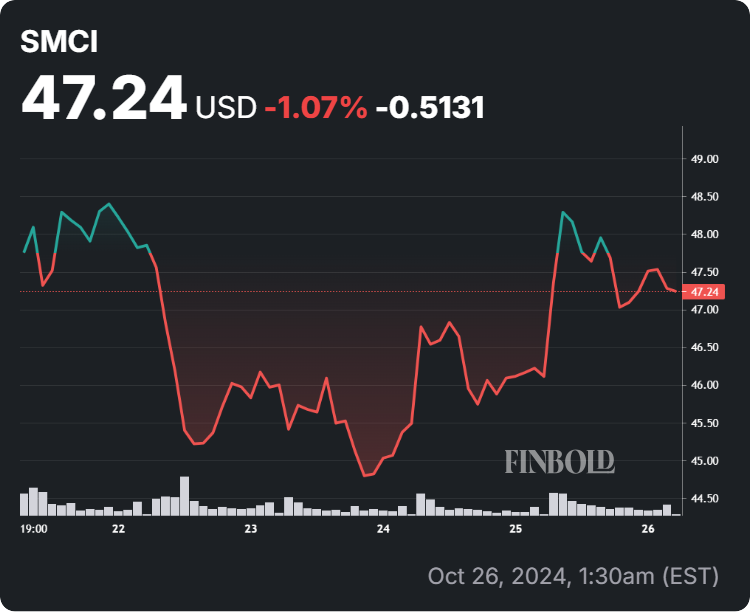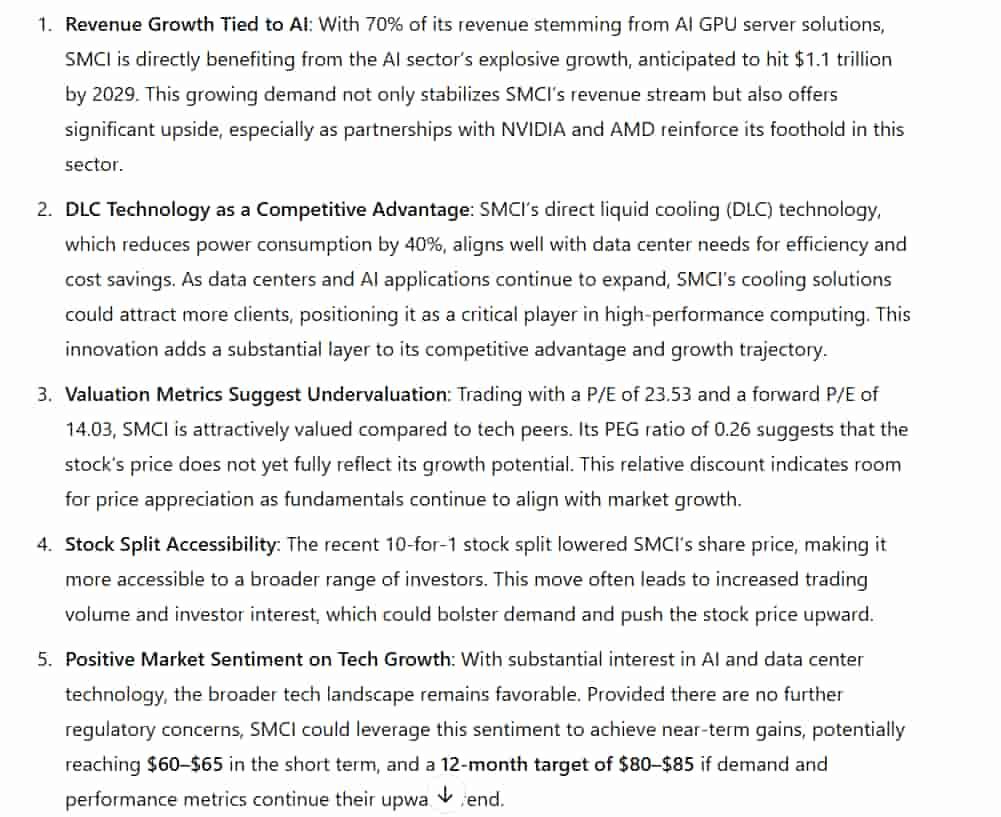Super Micro Computer, Inc. (NASDAQ: SMCI) has experienced a turbulent 2024, highlighted by rapid growth due to advancements in cooling technology and its recent inclusion in the S&P 500 and Nasdaq-100 indices. Once a high-flyer in the AI sector, SMCI’s stock has encountered significant challenges this year.
Despite its achievements, the company has faced intense scrutiny. In August, short-seller Hindenburg Research released a report alleging financial irregularities, followed by a Department of Justice (DOJ) investigation into SMCI’s accounting practices.
These events, along with delays in filing its 10-K report, contributed to a substantial 61% decline from March highs, with shares now trading at $47.27.
Picks for you

These developments have heightened uncertainty, leaving investors eager to know if SMCI can rebound or if further downside is likely.
Major factors influencing SMCI stock price
This month, Super Micro executed a 10-for-one stock split to reduce the face value of its shares, aiming to make them accessible to a broader range of investors.
While stock splits often yield a short-term spike, the primary driver for SMCI’s stock may be its fundamentals, with several major factors influencing its performance.
Key drivers: AI demand and industry growth
Super Micro Computer’s core markets, AI, data centers, and cloud computing, are rapidly expanding, driven by the rising demand for advanced computing solutions.
According to the Artificial Intelligence (AI) Market Forecast Report 2024, the global AI market is projected to grow from $148.8 billion in 2023 to $1.1 trillion by 2029, representing a compound annual growth rate (CAGR) of 39.7% from 2024 through 2029.
As a major provider of GPU server solutions, SMCI is well-positioned to capitalize on this trend, particularly through partnerships with industry leaders like NVIDIA (NASDAQ: NVDA) and AMD (NASDAQ: AMD).
Approximately 70% of SMCI’s revenue is derived from AI GPU server solutions, tying its growth prospects to the success of NVIDIA and AMD.
Additionally, SMCI’s innovative direct liquid cooling (DLC) technology has become a significant revenue driver.
This DLC technology reduces power consumption by up to 40%, making it an attractive solution for AI-driven data centers that require efficient operations within power constraints.
“Supermicro recently deployed more than 100,000 NVIDIA GPUs with liquid cooling solution (DLC) for some of the largest AI factories ever built, as well as other CSPs.”-the company said in a press release
With over 2,000 liquid-cooled racks deployed and a strong demand for energy-efficient solutions, SMCI’s advanced cooling technology has the potential to strengthen its competitive position in the AI and high-performance computing sectors.
With a price-to-earnings (P/E) ratio of 23.53 and a forward P/E of 14.03, according to Stock Analysis, SMCI trades at a relative discount compared to other tech stocks. Its PEG ratio of 0.26 suggests robust growth potential relative to its earnings.
Analysts are also optimistic about SMCI; Needham analyst Quinn Bolton highlighted SMCI as a significant beneficiary of the growing demand for liquid cooling infrastructure.
Bolton has a ‘Buy’ rating on SMCI stock and predicts a potential upside of 32.3% from current levels, according to TipRanks.
To provide further insight into SMCI’s potential year-end performance, Finbold consulted OpenAI’s advanced tool, ChatGPT-4, to predict the stock’s movement based on current market conditions and company performance.
AI prediction for year-end 2024
Given these factors, AI models project that SMCI stock could trade between $60 and $65 by the end of 2024.

Looking further ahead, AI predicts that, with sustained industry growth and successful integration of its technology in data centers, SMCI could reach a range of $80 to $85 within the next year, assuming that there are no significant regulatory or financial disruptions.
Investors will be closely watching SMCI’s next earnings report, set for November 7, 2024, to assess the company’s ability to recover and regain momentum.








